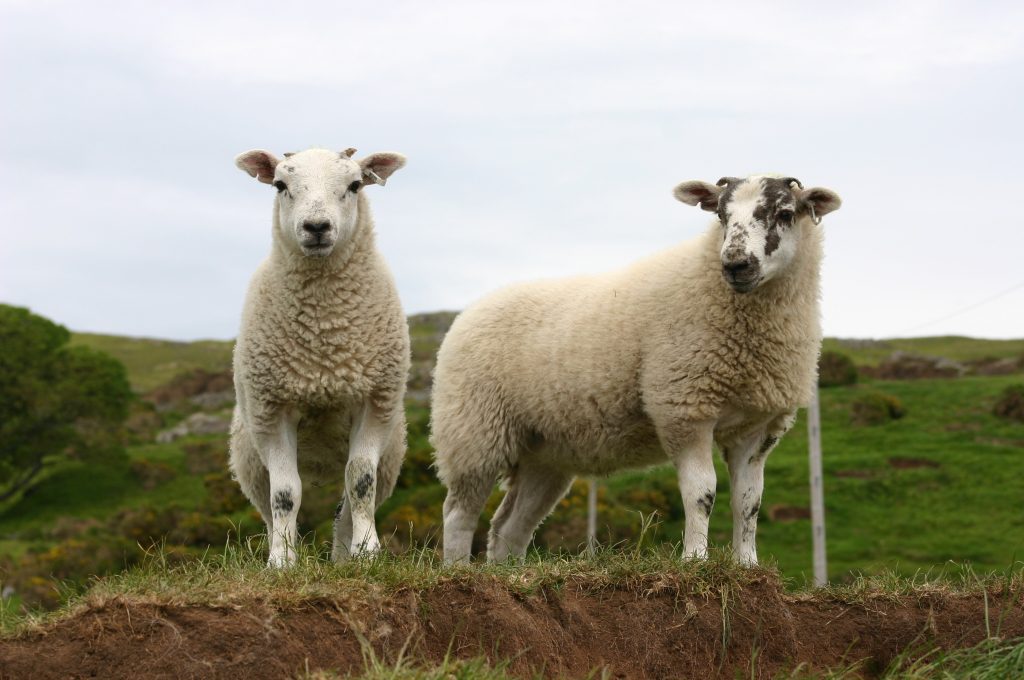Significant Rise in Lamb Numbers Sold in Scotland and GB
A significant lift in the number of lambs being sold in Scotland and the GB took place during Royal Highland Show week, according to the latest market analysis by Quality Meat Scotland (QMS).
This increase has coincided with a dip in lamb prices of around 20p/kg/lw, generating concern from sheep farmers. In-depth analysis of the market situation by QMS gives an indication of the factors affecting market prices.
“The most striking aspect of Scottish and GB lamb marketings has been the substantial increase in lambs sold during the Royal Highland Show week,” observed Stuart Ashworth, QMS Head of Economics Services.
“This year during the week beginning 15th June, Scottish auctions sold 60% more new season lambs than the previous week and one third more than during the same week a year ago.”
Compared with the same week in 2013, a year with a very difficult spring, almost twice as many new season lambs were sold in 2015.
This pattern repeats itself across GB as a whole, with 15% more new season lambs sold in 2015, than in the same week last year.
Between May and the middle of June around two per cent more lambs have reached the GB market, consistent with the reported increase in breeding sheep numbers shown in the December 2014 census. However, their arrival on the market has not been steadily ahead of last year but has varied greatly between weeks.
Mr Ashworth said there were two key factors which have been influencing the volume of lambs reaching the market in 2015 – grass and lamb growth rates and the start of a religious festival.
“The influence of this season’s grass and lamb growth is reflected in a higher volume of new season lambs sold in May compared to year earlier levels, followed by a slowdown in numbers at the start of June,” he said.
“Ramadan is an important Muslim festival that moves forward in the calendar by a fortnight each year. There is some evidence looking at the past few years to suggest that it supports prices until it begins but then prices come under pressure, although there can be a short-lived lift in the final week of Ramadan,” stated Mr Ashworth.
This year there are indications, he said, that demand has not been as strong as expected at the same time as the increase in availability has occurred, so there will be a short-term build in meat stocks. The steep fall in the price over the past fortnight has slowed the number of lambs presented to the market this week.
Producer prices have also come under pressure around the globe, Mr Ashworth said.
“French and Irish producers are currently receiving around six per cent less than last year and Spain has also seen steep falls in heavy lamb prices, while their light lambs are trading around six per cent lower than last year.
“The current New Zealand producer price is around 15% lower in national currency and has fallen further when quoted in Sterling.”
New Zealand’s price has come under pressure from a distinct cooling of demand from China – which is reported to have taken at least one third less sheepmeat in May than last year – along with a recovery in slaughter numbers.
New Zealand lamb slaughterings, which had been particularly high in December and January followed by significant falls in February and March, recovered to stand 13% higher in May than last year, although carcase weights have fallen.
Despite these changes in supply and demand, New Zealand trade sources indicate little change in the volume of New Zealand lamb sent to GB in May, despite lower prices, although there has been some growth in trade to Northern EU Member States and the United States.
The fall in prices in France and Ireland have occurred despite their domestic supplies being tighter than last year, suggesting sluggish consumer demand.
The latest information from Ireland suggests that for the past month slaughter volumes have been lower than last year, while French slaughterings have been 3.5% lower between January and the end of April.
Meanwhile looking at the UK retailers’ shelves, prices for lamb cuts during June are around 5% lower than last year.






